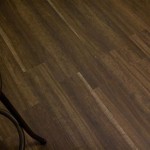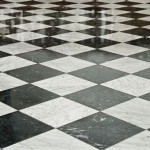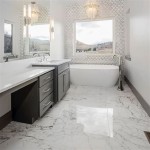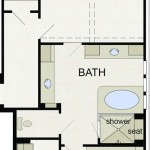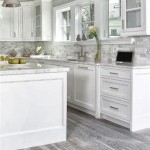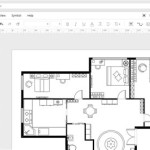Best Vent Covers For Wood Floors: A Comprehensive Guide
Maintaining the integrity and aesthetic appeal of wood floors requires careful attention to detail, and one often overlooked aspect is the choice of vent covers. Vent covers, also known as registers or grilles, serve the dual purpose of regulating airflow and protecting the HVAC system from debris. Selecting the appropriate vent cover for wood floors involves considering factors such as material, design, functionality, and aesthetic compatibility. This article provides a comprehensive guide to navigating the options and choosing the best vent covers for preserving the beauty and longevity of wood flooring.
Material Considerations for Wood Floor Vent Covers
The material composition of a vent cover significantly impacts its durability, appearance, and performance. Several materials are commonly used, each with its own set of advantages and disadvantages. Understanding these material properties is crucial for making an informed decision.
Wood: Wood vent covers offer a seamless and natural aesthetic that blends harmoniously with wood floors. They can be crafted from various wood species, allowing homeowners to match the vent cover to the flooring's color and grain pattern. However, wood is susceptible to moisture damage and may require periodic sealing or staining to prevent warping or discoloration. Wood vent covers are best suited for environments with stable humidity levels.
Metal: Metal vent covers, commonly made from steel, aluminum, or brass, provide superior durability and resistance to wear and tear. Steel vent covers are typically powder-coated to prevent rust and corrosion, while aluminum vent covers are lightweight and inherently resistant to corrosion. Brass vent covers offer a classic and elegant look, but may tarnish over time and require occasional polishing. Metal vent covers are a practical choice for high-traffic areas and environments with fluctuating humidity levels.
Plastic: Plastic vent covers are a cost-effective option that is resistant to moisture and easy to clean. They are available in a variety of colors and styles, but may not offer the same aesthetic appeal or durability as wood or metal vent covers. Plastic vent covers are suitable for budget-conscious homeowners or for areas where appearance is less of a concern.
When choosing a material, consider the following factors: the existing floor material, the amount of foot traffic, the moisture levels in the room, and the overall aesthetic you are trying to achieve.
Design and Functionality of Vent Covers
Beyond material, the design and functionality of a vent cover play a critical role in its performance and suitability for wood floors. Features such as adjustable dampers, removable cores, and directional vanes can enhance airflow control and ease of maintenance. The physical design must also be considered to ensure it fits flush with the floor and does not pose a tripping hazard.
Adjustable Dampers: Vent covers with adjustable dampers allow homeowners to control the amount of airflow entering or exiting a room. This feature is particularly useful for balancing temperatures in different areas of the house or for directing airflow away from sensitive furniture or artwork. Dampers can be manually adjusted or, in some cases, controlled remotely via a smart thermostat system.
Removable Cores: Vent covers with removable cores simplify cleaning and maintenance. The core can be easily removed to access the ductwork below, allowing for the removal of dust, debris, and allergens. Removable cores also make it easier to apply finishes or stains to wood vent covers.
Directional Vanes: Vent covers with directional vanes allow homeowners to direct airflow in a specific direction. This feature is useful for maximizing heating or cooling efficiency or for preventing drafts. Vanes can be adjusted manually or, in some cases, automatically adjusted by the HVAC system.
Flush Mounting: For wood floors, flush-mounted vent covers are often preferred. These covers sit level with the floor surface, minimizing the risk of tripping and creating a cleaner, more integrated appearance. Flush mounting also reduces the accumulation of dirt and debris around the edges of the vent cover.
The design of the vent cover must also complement the style of the room. Elaborate designs are suitable for more formal spaces, while simpler designs are better suited for modern or minimalist interiors.
Installation and Maintenance of Wood Floor Vent Covers
Proper installation and regular maintenance are essential for ensuring the longevity and performance of wood floor vent covers. Incorrect installation can lead to air leaks, uneven flooring, and potential damage to the HVAC system. Neglecting maintenance can result in dust and allergen buildup, reduced airflow, and unsightly appearances.
Installation Procedures: The installation process varies depending on the type of vent cover and the existing ductwork. In general, the following steps are involved:
- Measure the duct opening: Accurately measure the dimensions of the duct opening to ensure a proper fit.
- Prepare the floor surface: Clean the area around the duct opening and remove any debris or obstructions.
- Install the vent cover: Align the vent cover with the duct opening and secure it in place using screws or clips.
- Seal the gaps: Seal any gaps between the vent cover and the floor to prevent air leaks.
For flush-mounted vent covers, it may be necessary to router out a recess in the floor to accommodate the cover. Professional installation is recommended for complex installations or for homeowners who are not comfortable working with power tools.
Maintenance Tips: Regular maintenance is crucial for keeping vent covers clean and functional. The following tips can help:
- Vacuum regularly: Vacuum the vent covers regularly to remove dust and debris.
- Clean with a damp cloth: Clean the vent covers with a damp cloth and mild detergent to remove dirt and stains.
- Remove and clean the core: Remove the core periodically and clean it with soap and water.
- Check for damage: Inspect the vent covers regularly for signs of damage, such as cracks, dents, or rust.
- Apply finish as needed: For wood vent covers, apply a new coat of finish or stain as needed to protect the wood from moisture and wear.
Proper installation and consistent maintenance will contribute significantly to the lifespan and aesthetic appeal of the vent covers, as well as the overall health of the HVAC system.
Aesthetic Considerations for Vent Covers in Wood Floors
Beyond functionality, the aesthetic compatibility of vent covers with wood floors is a key consideration. The vent cover should complement the style and color of the flooring, enhancing the overall visual appeal of the space. This involves considering color matching, design style, and the presence of any patterns or textures in the flooring.
Color Matching: Ideally, the vent cover should closely match the color of the wood floor. This creates a seamless and integrated look. If an exact match is not possible, choose a vent cover that is a shade lighter or darker than the floor. For wood vent covers, staining or painting the cover to match the floor is an option.
Design Style: The design of the vent cover should complement the style of the room. For traditional interiors, ornate or decorative vent covers may be appropriate. For modern or minimalist interiors, simpler, more streamlined vent covers are preferable. Consider the shapes and patterns present in the floor and surrounding decor when choosing a design.
Pattern and Texture: If the wood floor has a distinct pattern or texture, choose a vent cover that does not clash with it. A simple, unadorned vent cover may be the best option for floors with intricate patterns. Conversely, a textured vent cover can add visual interest to a floor with a smooth, uniform surface.
Material Finish: The finish of the vent cover should also complement the flooring. A matte finish is often a good choice for wood floors, as it minimizes glare and blends in seamlessly. Metal vent covers can be found in a variety of finishes, including brushed, polished, and powder-coated. Choose a finish that complements the other metal fixtures in the room.
Careful attention to aesthetic details can elevate the overall look of a room and ensure that the vent covers are a seamless and attractive part of the design.
Addressing Common Problems with Vent Covers on Wood Floors
Several common issues can arise with vent covers on wood floors, including squeaking, rattling, air leaks, and damage to the surrounding flooring. Addressing these problems promptly is essential for maintaining the integrity of the floor and the efficiency of the HVAC system.
Squeaking and Rattling: Squeaking or rattling vent covers are often caused by loose screws, worn-out dampers, or uneven flooring. Tightening the screws, lubricating the dampers, or adding shims beneath the vent cover can often resolve these issues.
Air Leaks: Air leaks around vent covers can reduce heating and cooling efficiency and create drafts. Sealing the gaps between the vent cover and the floor with caulk or weather stripping can eliminate air leaks.
Damage to Flooring: Improperly installed or poorly maintained vent covers can damage the surrounding flooring. Scratches, dents, and water damage are common problems. Using felt pads or rubber bumpers on the underside of the vent cover can protect the floor from scratches. Addressing water leaks promptly can prevent water damage.
Rust and Corrosion: Metal vent covers are susceptible to rust and corrosion, especially in humid environments. Powder-coated or corrosion-resistant metal vent covers are recommended for these areas. Periodic cleaning and maintenance can also help prevent rust and corrosion.
By understanding these common problems and implementing preventative measures, homeowners can ensure the long-term performance and aesthetic appeal of their wood floor vent covers.
Conclusion
Choosing the best vent covers for wood floors involves a careful consideration of material, design, functionality, aesthetics, installation, and maintenance. By understanding the various options and addressing potential problems proactively, homeowners can select vent covers that complement their wood flooring, enhance the efficiency of their HVAC system, and maintain the overall beauty of their home.

Beautiful Hardwood Floor Heating Vents

Beautiful Hardwood Floor Heating Vents
.jpg?strip=all)
How To Make A Wood Vent Cover The Best Air Filters

Wood Floor Vents Flush Mount American

Decorative Floor Register Buying Guide

Wood Floor Vents Flush Mount American

Beautiful Hardwood Floor Heating Vents

Drop In Vs Flush Mount Venting Svb Wood Floors

Top Step Flush Mount Vents

Airwood Flooring Accessories Hand Crafted Hardwood Vents

